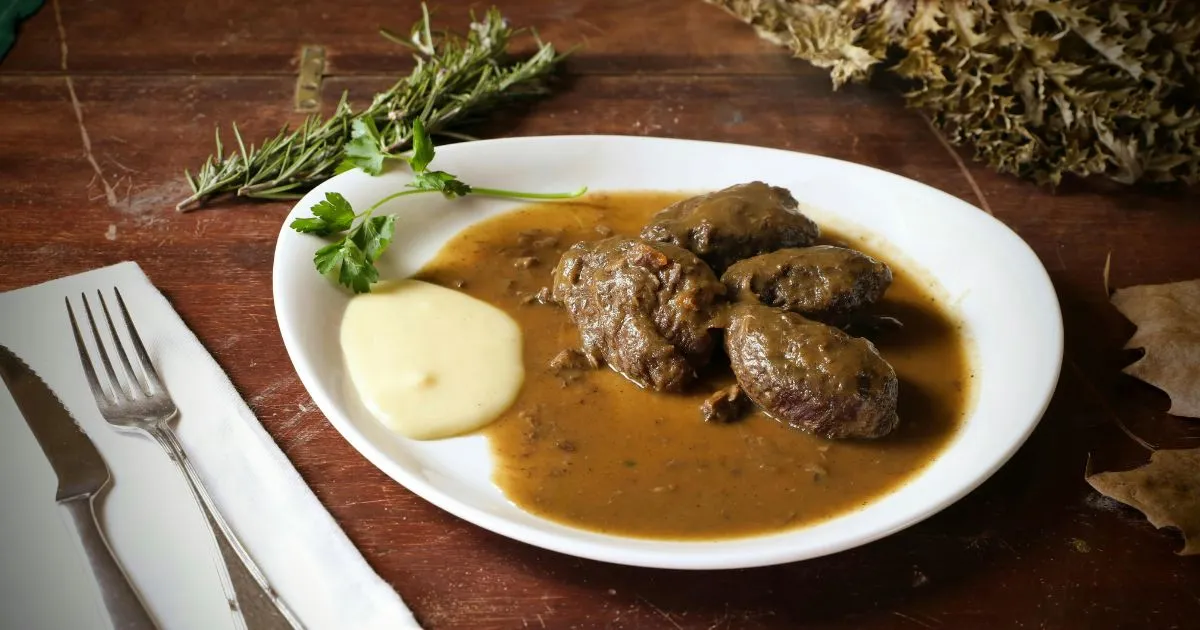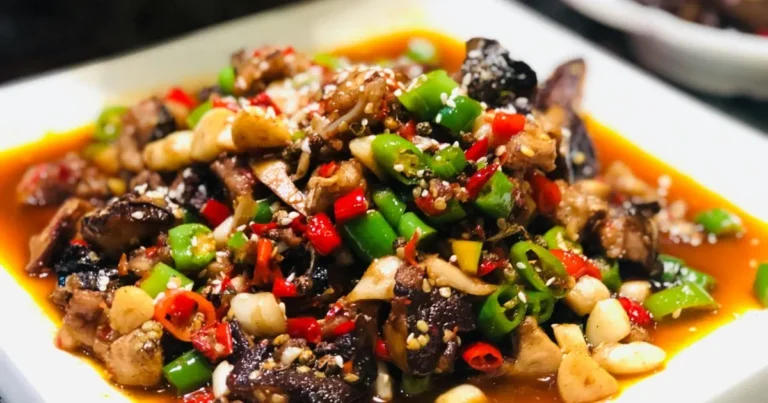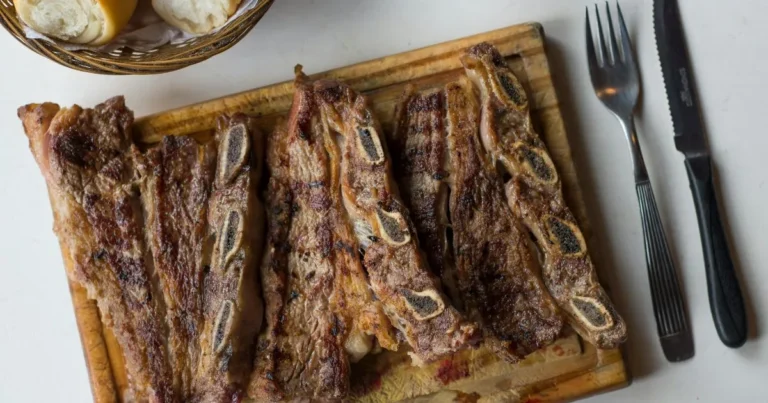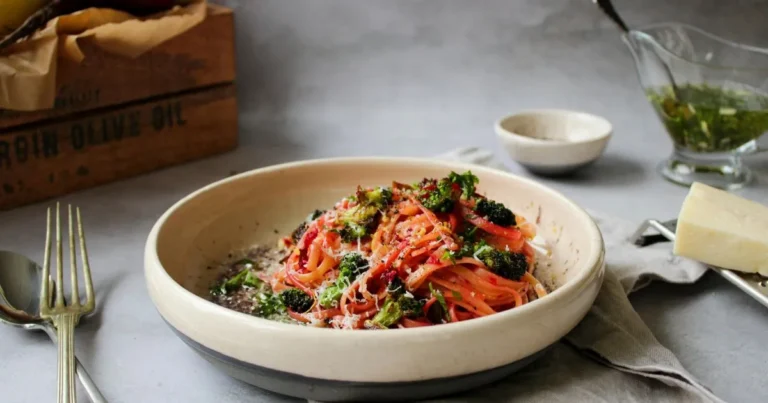Making Beef Gravy from Scratch – Step-by-Step Guide
Table of Contents
Making beef & gravy from scratch can elevate simple meals into something amazing. Homemade gravy lets you control the flavor, unlike store-bought versions. Learning to make beef gravy opens up a world of delicious possibilities for your cooking.
Anyone can learn to make perfect beef & gravy with basic skills and kitchen knowledge. It might seem hard at first, but with practice, it becomes easy and rewarding.
Key Takeaways
- Homemade gravy provides superior flavor compared to pre-made versions
- Making beef gravy requires minimal specialized equipment
- Fresh ingredients are crucial for exceptional gravy
- Technique matters more than complex ingredients
- Practice improves gravy-making skills quickly
- Customizing gravy allows for personal culinary creativity
Essential Ingredients for Perfect Beef Gravy
Making delicious beef gravy starts with the right ingredients. It’s an art that needs careful picking of parts for rich flavors. These flavors should match your beef tips with gravy perfectly.
The Foundation: Pan Drippings
Pan drippings are key to great gravy. They come from roasted or seared beef. These drippings add a deep meaty flavor that makes the sauce special.
- Collect drippings right after cooking meat
- Scrape brown bits from the pan for maximum flavor
- Strain drippings to remove any unwanted particles
Selecting Quality Thickeners and Liquids
Your choice of flour and stock is crucial. Traditional all-purpose flour is good, but some like cornstarch for a smoother texture.
| Thickener | Texture | Recommended Use |
| All-Purpose Flour | Classic, slightly opaque | Traditional beef gravy |
| Cornstarch | Glossy, translucent | Asian-inspired gravies |
Elevating Flavor with Seasonings
Aromatics and seasonings are key to great gravy. Fresh herbs like thyme and rosemary, along with black pepper and garlic, make a basic gravy unforgettable.
“The right seasoning can turn good gravy into an unforgettable culinary experience.” – Professional Chef
By choosing and mixing these ingredients well, you’ll make a gravy that takes your beef dishes to the next level.
Kitchen Tools You’ll Need for Making Beef Gravy
To make an easy beef tips recipe with homemade gravy, you need some basic kitchen tools. You don’t need fancy chef equipment to make tasty beef gravy at home. Most tools you already have in your kitchen, making the process easy and fun.
- Whisk: Critical for blending flour and preventing lumps in your gravy
- Heavy-bottomed saucepan: Ensures even heat distribution
- Measuring cups and spoons
- Fine-mesh strainer
- Wooden spoon
Knowing how each tool works is key to making great gravy. A good whisk helps avoid lumpy sauces. A heavy-bottomed saucepan keeps your gravy from burning and cooks it evenly.
| Tool | Purpose in Gravy Making |
| Whisk | Smooth out roux and integrate ingredients |
| Saucepan | Create and simmer gravy base |
| Measuring Cups | Ensure precise ingredient proportions |
| Strainer | Remove any unwanted particles for silky texture |
With these tools, you’re ready to make top-notch gravy in your kitchen. The secret is to practice and be patient with your easy beef tips recipe.
Understanding the Basic Gravy-Making Process
Making beef gravy is an art that needs precision and understanding of key techniques. It turns simple ingredients into a rich, smooth sauce. Whether it’s for a classic sirloin tip recipe or a Sunday roast, mastering gravy-making will improve your cooking.
The key to great gravy is knowing several important elements. These elements work together to make a delicious sauce. Learning these techniques will let you make restaurant-quality gravy at home.
The Role of Roux in Gravy Making
A roux is the essential thickening agent in beef gravy. It’s a mix of equal parts fat (like butter or pan drippings) and flour. This creates a smooth base for your sauce. When making sirloin tip recipes, the roux helps the liquid bind and gives a velvety texture.
- Combine fat and flour in equal proportions
- Cook the mixture until it turns a light golden color
- Whisk continuously to prevent burning
Proper Temperature Control
Temperature control is key when making beef gravy. Keep the heat steady at medium to avoid scorching and let flavors develop. Patience is key – rushing can result in lumpy or burnt gravy.
“Good gravy takes time and attention to detail.” – Professional Chef
Achieving the Right Consistency
The perfect gravy coats the back of a spoon without being too thick or too thin. For sirloin tip recipes, aim for a consistency that slowly drips but isn’t watery. Adjust thickness by adding more liquid or reducing the sauce.
- Start with a thin liquid and gradually thicken
- Use a whisk to prevent lumps
- Taste and adjust seasonings as you go
Making Beef Gravy: The Complete Process
Making beef gravy needs care and focus. You’ll turn simple items into a tasty sauce by following a clear method.
First, get your key ingredients ready for beef & gravy:
- Pan drippings from roasted meat
- Unsalted butter
- All-purpose flour
- Beef stock
- Salt and pepper
The secret to great beef gravy is a perfect roux. This mix of fat and flour is the sauce’s base. Here’s how to make it:
- Collect pan drippings after roasting your beef
- Strain drippings to remove any solid particles
- Melt butter in a heavy-bottomed saucepan
- Gradually whisk in flour to create a smooth paste
- Cook the roux for 2-3 minutes to eliminate raw flour taste
Getting the right consistency is key. Slowly add warm beef stock while whisking to avoid lumps. Keep cooking until it’s the right thickness.
| Gravy Consistency | Whisking Technique | Cooking Time |
| Thin | Rapid, light whisking | 3-5 minutes |
| Medium | Steady, consistent whisking | 5-7 minutes |
| Thick | Slow, deliberate whisking | 7-10 minutes |
Season your beef & gravy with salt, pepper, and herbs like thyme or rosemary. Taste and adjust as needed. Your homemade gravy is now ready to make any meat dish better.
Tips for Creating Rich and Flavorful Beef & Gravy
To make your beef & gravy stand out, you need to pay attention to detail. Professional chefs use special techniques to make their beef tips with gravy amazing.
Improving your gravy’s taste is all about using the right strategies. These tips can help you create a beef & gravy that wows everyone.
Deglazing the Pan Properly
Deglazing is key when making beef tips with gravy. Here’s how to do it right:
- Use warm liquid to loosen browned bits
- Scrape pan bottom thoroughly with a wooden spoon
- Select liquids that complement your meat’s flavor
Seasoning Techniques
Seasoning is what turns simple beef & gravy into a work of art. Here are some expert tips:
- Layer herbs at different cooking stages
- Use fresh ground black pepper
- Balance salt carefully
Adding Depth with Wine or Stock
Adding wine or stock is a trick used by chefs to enhance your gravy:
| Liquid | Flavor Profile | Best Used With |
| Red Wine | Rich, Complex | Beef Roasts |
| Beef Stock | Intense Meat Flavor | Beef Tips |
| Mushroom Stock | Earthy Undertones | Hearty Dishes |
Pro tip: Always add liquids gradually and taste frequently to build the perfect depth of flavor in your beef & gravy.
Common Mistakes to Avoid When Making Gravy
Making beef gravy can be tricky, even for experienced home cooks. Knowing the common mistakes helps you make a smooth, flavorful sauce for your easy beef tips recipe every time.
When preparing gravy, several common mistakes can ruin your dish. Here are key issues to watch out for:
- Lumpy Texture: Prevent lumps by whisking flour or cornstarch thoroughly into your pan drippings
- Inconsistent Thickness: Gradually add liquid while stirring to control gravy consistency
- Bland Flavor: Season generously and use rich stock for deeper taste
- Burning Roux: Maintain medium heat and stir constantly when making beef gravy
Temperature control is key when making beef gravy. Too high heat can cause scorching, while too low prevents proper thickening. Aim for a steady medium temperature and keep your whisk moving.
Your easy beef tips recipe deserves an excellent gravy. Practice these techniques to transform potential mistakes into perfectly smooth, rich sauces that enhance your dish.
“The secret to great gravy is patience and consistent technique.” – Professional Chef
Variations of Classic Beef Gravy Recipes
Want to make your beef & gravy stand out? Try new flavors that turn your sirloin tip recipes into something special. Each gravy style adds its own twist, making your dishes more exciting.
Red Wine Beef Gravy
Red wine gravy is a fancy twist on the classic. Use a dry red wine like Cabernet Sauvignon or Merlot for a bold sauce. The wine’s acidity makes the gravy smooth and intense, perfect for sirloin tips.
- Deglaze pan with 1/2 cup red wine
- Reduce wine by half before adding stock
- Strain for a silky smooth texture
Mushroom Beef Gravy
Mushrooms make beef & gravy rich and indulgent. Cremini or porcini mushrooms add a deep, earthy flavor that pairs well with beef.
- Sauté mushrooms until golden brown
- Add minced garlic for extra flavor
- Blend mushrooms directly into gravy
Onion-Enhanced Gravy
Caramelized onions add a sweet, complex taste to your gravy. Cooking onions slowly makes them sweet, enhancing any sirloin tip recipe.
- Caramelize onions over low heat
- Use sweet onions like Vidalia
- Incorporate onions directly into roux
Storage and Reheating Guidelines
Keeping your homemade beef gravy fresh is key. You want it to taste great for your next meal. Follow these steps to keep your gravy delicious.
First, cool your gravy down before putting it in the fridge. Use an airtight container and store it within two hours of cooking. This way, your gravy can stay good for 3-4 days in the fridge.
- Use glass or ceramic containers with tight-fitting lids
- Cool gravy completely before refrigerating
- Cover the surface with plastic wrap to prevent skin formation
Freezing is another way to keep your gravy fresh for longer. Pro tip: Freeze it in small portions for easy use later. Frozen at 0°F, your gravy can last 4-6 months.
Reheating Techniques
To warm up your stored gravy, use gentle heat. This helps keep it smooth. Here’s how to do it right:
- Thaw frozen gravy in the refrigerator overnight
- Use a saucepan on low to medium heat
- Stir constantly to prevent scorching
- Add a small amount of broth if the gravy seems too thick
If your gravy gets lumpy or separates, don’t worry. Just whisk it well or use an immersion blender. With these tips, you can enjoy your beef tips with gravy whenever you want!
Pairing Your Gravy with Beef Tips and Sirloin
To make your beef tips with gravy special, think about what to pair and how to present it. The right sides can turn your sirloin tip recipes into unforgettable meals. They will impress your family and guests.
Perfect Side Dishes
Choosing the right sides for beef tips with gravy can really make your meal better. Here are some great options:
- Creamy mashed potatoes
- Roasted seasonal vegetables
- Buttered egg noodles
- Fluffy white rice
- Crusty artisan bread
Serving Suggestions
How you present your sirloin tip recipes is just as important as how they taste. Use these tips to make your dish look great:
| Technique | Description |
| Height Layering | Stack meat slightly off-center with gravy cascading down |
| Garnish Strategy | Sprinkle fresh herbs like parsley or chives for color |
| Gravy Drizzling | Use a small ladle for precise, artistic gravy placement |
Don’t forget about temperature when serving beef tips with gravy. Serve them right away to keep the flavors and textures perfect.
Troubleshooting Common Gravy Problems
Making beef gravy can be tricky, but with the right techniques, you can overcome most challenges in your easy beef tips recipe. Let’s explore some common gravy problems and their solutions.
Lumpy Gravy Rescue
Lumpy gravy can ruin an already perfect meal. To fix this issue, use these quick solutions:
- Whisk vigorously while the gravy is still hot
- Use a fine-mesh strainer to remove lumps
- Blend the gravy with an immersion blender for smooth results
Consistency Challenges
When your beef gravy is too thin or thick, you have several options:
- For thin gravy: Mix 1 tablespoon of cornstarch with cold water and whisk into the gravy
- For thick gravy: Gradually add warm stock or water while stirring
Flavor and Color Corrections
Bland or pale gravy can be transformed with these professional tips:
- Add a splash of soy sauce for deeper color
- Incorporate beef bouillon for enhanced flavor
- Use dark roasted pan drippings to intensify taste
“Perfect gravy is an art that requires patience and practice” – Professional Chef Tip
Remember, making beef gravy is a skill that improves with each attempt. Don’t get discouraged by initial setbacks in your easy beef tips recipe.
Conclusion
Making beef gravy from scratch makes any meal special. You now know how to make rich, tasty beef & gravy. This will make any dish stand out.
It takes time and practice to get it right. Each try will teach you something new. You’ll learn about flavors, consistency, and sauce-making.
Start making your own beef & gravy today. Try different stocks, wines, and seasonings. Homemade gravy adds comfort and depth to any meal.
Keep practicing and sharing your gravy with others. They’ll love the delicious results of your hard work. Your homemade beef gravy will become a favorite in your cooking.
FAQ
How long can I store homemade beef gravy?
You can keep homemade beef gravy in the fridge for 3-4 days. For longer storage, freeze it for 4-6 months. Always cool it down before storing and reheat well before serving.
What’s the best way to prevent lumps when making gravy?
To avoid lumps, slowly whisk flour into the pan drippings or butter. Stir constantly. Use a wire whisk and add liquid slowly while whisking. If lumps form, strain the gravy or use an immersion blender to smooth it.
Can I make beef gravy without pan drippings?
Yes, you can make beef gravy without pan drippings. Use beef stock, butter, flour, and seasonings. Adding a beef bouillon cube or concentrated beef base can enhance flavor. While pan drippings are best, these alternatives work well too.
How do I fix gravy that’s too thin?
To thicken thin gravy, mix 1-2 tablespoons of cornstarch or flour with cold water. Whisk it into the hot gravy. Or, simmer the gravy uncovered to reduce and thicken it naturally. Add thickener slowly to avoid over-thickening.
What can I do if my gravy is too salty?
If your gravy is too salty, add more unsalted stock or water. You can also add cream or a peeled, quartered potato while simmering (remove before serving). A splash of vinegar or lemon juice can also balance the saltiness.
Can I make gravy ahead of time?
Absolutely! You can make beef gravy 1-2 days in advance. Store it in the fridge. Reheat slowly over low heat, whisking occasionally. If too thick, thin with a little stock or water.
Are there any dairy-free options for making gravy?
Yes, you can make dairy-free gravy. Use olive oil or vegetable oil instead of butter. Use cornstarch or gluten-free flour for thickening. Vegetable or beef stock can replace milk or cream, making a delicious, dairy-free gravy.
What’s the difference between beef tips and sirloin for gravy?
Beef tips are smaller, more tender pieces of beef, often from the sirloin or tenderloin. Sirloin is a specific cut from the rear back portion of the cow. Both are great with gravy, but beef tips are more tender and cook faster. Sirloin might need longer cooking to be as tender.
Did You Try Our Recipe?
There are no reviews yet. Be the first one to write one.





